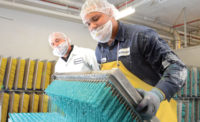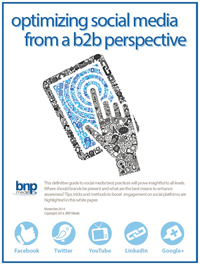![]()
Kid Wrappers Should Rock!
bY Renee Marisa Covino
Kids do judge candy by its cover—so it’s important
to roll with packaging that plays right into their hands.
Sure, juvenile consumers spend a heck of a lot more time enjoying
candy than they do studying the wrappers. But if you think kids aren’t as discerning
as adults when it comes to the wording and design that surround confections,
think again.
“Marketing messages to kids are highly underrated,” says Armand
Hammer, president of Innovative Candy Concepts. “Kids have a great ability to
know what’s good and what’s not good. Especially when they’re spending their
own money, they’re very discriminating.”
Color it kids
Color is the first element that can make or break the
kids’ packaging perception, according to Mada Design, a design firm
in New York City that likes to keep a finger “on the pulse of pop
culture,” and has created style guides for kid candy products such as
Topps’ RingPops and PushPops. While the company is speaking directly
to manufacturers who want to design the right packaging, it makes note that
retailers who are creating special kid promotions or signage can also
utilize these theories.
“With color you’re trying to do two things simultaneously,”
begins Stan Madaloni, CEO of Mada Design. “You want to call attention to the
package as a kids’ package, and you want to use color to communicate flavor.
You have a split second to accomplish both, keeping in mind that this will take
place on a shelf next to hundreds of other confectionery products all trying
to do the same thing.”
When coloring to kids — “you generally
want to get it as bright as possible,” maintains Madaloni. “We
use fluorescents whenever we can. Kids respond well to elements that are
bright and popping out. Just look at the TV culture — colors are
saturated in super brights.” He classifies “Nickelodeon
Orange” as an immensely strong hue attraction, as are the bright
pinks and greens of Fairly Odd Parents. “These colors have a strong
resonance with kids right now,” he adds.
Using color to convey taste is the other half of the hue consideration,
and often it can go hand-in-hand with the bright attraction technique. “Right
now there are a lot of sours on the market, and across manufacturer lines, the
sub-category started to develop its own sense of color,” says Madaloni. “Just
by its flavor nature, we’re seeing a lot of bright greens.”
Some flavor-colors are easier to convey than others.
“We like to use a lot of high jewel-toned colors for kids —
orange is easy, grape is easy — but what do you do with cherry cola,
for instance?” asks Madaloni rhetorically.
That color actually did come up recently for Mada
Design, and the company spent a lot of time getting it just right.
“It had to be deep red, but not deep brown,” explains Madaloni.
“It had to be appealing and mouth-watering for kids, so we had to
make sure we had just the right balance of red and brown.” Of course,
this flavor/color combination had some leeway because it was slanted a bit
more toward older kids.
Targeting tweens
While bright colors seem to have a universal kid
appeal, “if colors are duller, that signals it’s a product for
older kids,” says David Siegel, co-author of “The Great Tween
Buying Machine: Capturing Your Share of the Multi-Billion Dollar Tween
Market.” He says that for tweens, typically 8 to 12 year-olds,
the right packaging formula goes way beyond color.
“Tweens are very visual, but they’re also very literal,” maintains
Siegel. “Marketers can take a lot more liberties with this age group than they
can with younger children, however, tweens want to know exactly what’s in the
package and they want it to be clearly identified. The biggest packaging mistake
a marketer can make to a tween is cluttering up the message.”
Because a candy purchase is a very serious one to tweens (they
typically must choose just one candy option per shopping trip either because
it’s their own limited money being spent, or parents are limiting the purchase),
they want to know exactly what’s inside the wrapper. “It’s a big investment
to them, and most of all, they want to make sure it tastes good,” says Siegel.
“Whether it’s a novelty candy or not, they want ‘good-tasting’ to be somehow
conveyed on the package.”
As for age-appropriateness, that should be on the package, too
— but not in so many words. “Tweens like to determine if a candy is suitable
for their age group by the graphics,” says Siegel. “Sometimes, the flavors alone
will be the signal — mints, for example, are for older kids than tweens. Sometimes,
it’ll be the product itself — suckers tend to be for younger kids than tweens,
unless you put some sort of novelty with it, then it’s acceptable. But the main
thing is to let the graphics speak to a product’s cool or edge factor. If you
say that it’s recommended for a certain age — that will just kill it for tweens.
They don’t want to be perceived as trying something ‘babyish.’ Keep in mind
that they won’t trade down in age at all.”
For this reason, the sours category has come up with an image
that is purposely not age- specific — a pucker face. “What captures kids’ eyes
in merchandising is something they can relate to, and cartoon pucker faces fit
the bill,” says Rose Downey, sales support and marketing manager for Au’some
Candy. “All kids know that this face means it is a sour product, and if they
like sours, they’ll have to have it.”
What is also super appealing to kids these days is products
with packaging that offers additional play value. “We’ve been seeing a saving
trend in packaging for kids — anything that prolongs their pleasure,” says Siegel.
In the candy business, this means re-closable bags, flip-top tubes, a re-usable
container — these are not just appealing to moms anymore. “It’s not that kids
necessarily save it when they’re done, but when they see it, they’ll think they
want to,” Siegel adds. “If they think the packaging can make the product last
longer, they love it. They’re big on stretching or saving their hard-earned
treats.”
Think safety
Last but not least, kid marketers have to think about safety
when designing kids’ packaging, especially when the “package” is part of the
product, as is customary in novelty candy items. “We avoid packaging with sharp
edges or pieces that can break off,” says Ari Weinstock, senior brand manager
for Topps Confections. “We follow strict FDA guidelines and take precautionary
measures to make sure our products are safe and sturdy. For example, a child
could not remove the “juice” container on a Juicy Drop Pop. We strive to make
our candy as safe and as fun as possible for kids.”
At the same time, FDA packaging information guidelines have
to be considered. “A lot of what we do is related to designing around FDA approval,”
says Madaloni. “The FDA has certain information it requires — the net weight,
the UPC, ingredients label, and all that needs to be a certain size compared
to the design elements we’re doing. Sometimes that’s a huge challenge on small
wraps of candy — sometimes we’re dealing with a label that’s two or three square
inches in total.”
The solution to that packaging dilemma? Get the retailer involved
in signage and POP. “Of course they must consider the same design elements on
large headers and POP displays that we use in packaging,” Madaloni advises.
“The right colors and words are just as important here. The only difference
is they must grab the child’s attention from 10 and 12 feet away, instead of
three.”






